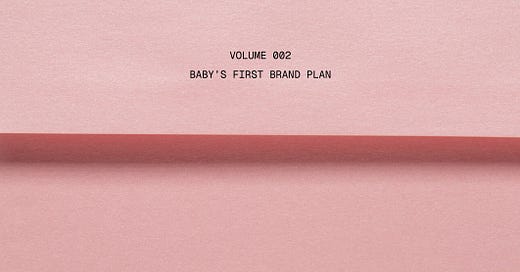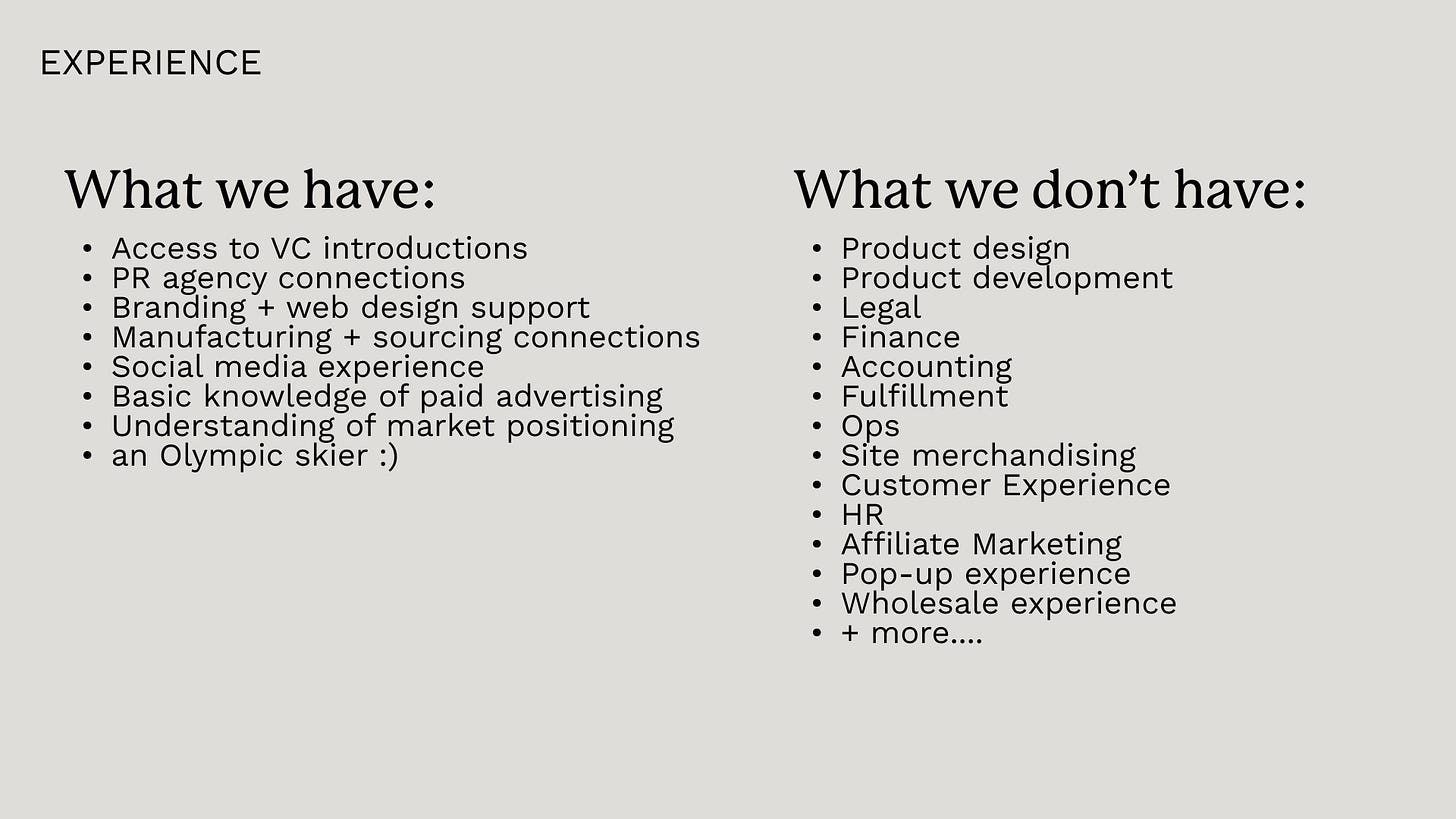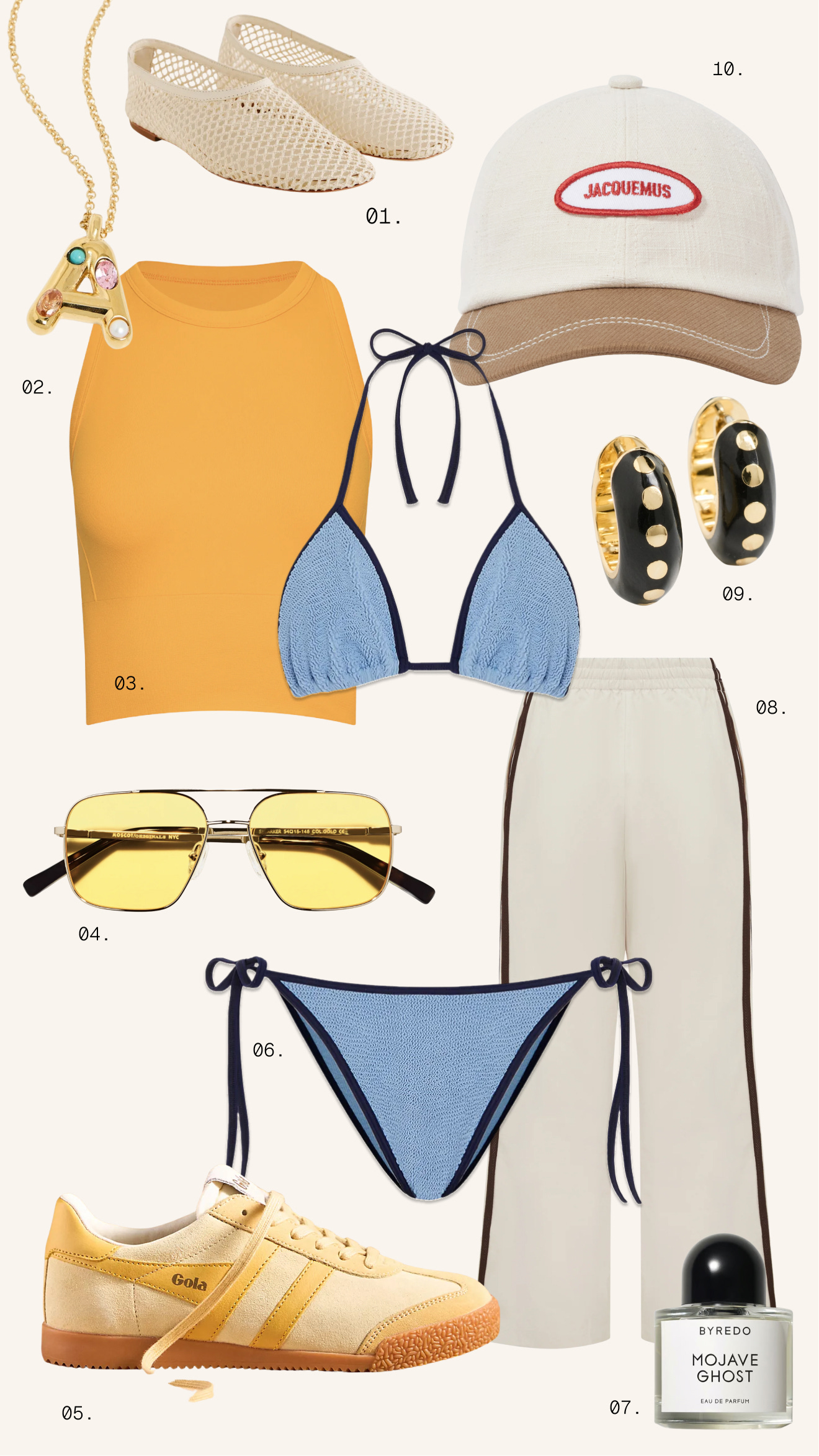Every founder has a starting story — it usually begins with an idea, a gap in the market, and, at least in our case, a healthy dose of naiveté.
5.5 million new business applications were filed in the U.S. last year. I bring this up because, like us, a lot of people are out here fully winging it — starting with a hunch and hoping it turns into something real.
In the earliest stages of Halfdays, we started with a lump of clay (figuratively speaking) yet to be molded into the brand we hoped it would become. By the time we brought our idea to market, it had gone through countless edits, revisions, and iterations to finally (ish — do those iterations ever really end?) become the Halfdays you see today.
So, what’s the secret to getting started?
For aspiring founders, I know it’s easy to look at the final iteration of a business and think, “Where tf do I even start?” I hear this question all the time. Seriously, if I had a dollar for every time it came up, I might not have to raise another round for tariff impacts (IYKYK).
Here’s the thing: launching a brand sounds scary. And I’d be lying if I said there won’t be lots of scary moments ahead. But starting shouldn’t be one of them.
The truth is there’s no “big moment.” It’s usually just a bunch of mini ones that quietly get you where you’re going.
The key is momentum, not perfection. (And I can’t stress this enough !!)
So here’s my step-by-step breakdown of exactly where to begin, from someone who also had no idea where to start:
Hit the deck, literally.
Start with a deck. Not for fundraising or proof of concept, this one’s just for you. A space to vision board, capture your ideas, and begin shaping them into something tangible.
Pull up some slides in whatever format feels intuitive to you — Figma, Canva, Google Slides, or PowerPoint. I’m a Figma girlie myself, but anything works.
01. Give it a name
If you don’t have one yet, call it NewCo and come back to it later. Don’t let indecision kill your momentum here— because (say it with me now): momentum is key.
02. Define the intention
Write one sentence that explains what you’re building. Just one.
If you’re stuck, look up a few value prop statements from your favorite brands. Keep it simple, sharp, and specific — something to anchor you as you build.
Here was mine: “Ski wear for the modern woman.” (This has evolved, but you have to start somewhere.)
03. Bring it to life
Drop in some inspo photos to illustrate the vibe you’re envisioning.
Ask yourself:
What images or aesthetics support the story I’m telling?
What brand designs am I drawn to?
What colors feel on theme?
04. Identify your target market
For many founders, you are your own target audience. That was true for my cofounders and me — we were solving a problem we personally faced and we used that to our advantage.
We already knew that our target market consisted of city-dwelling women, ages 20-40, who loved fashion and the outdoors, but we needed to dig deeper.
Even if you feel authentically connected to your audience like we did, you’ll still want to define the persona(s) within your target demo. To deeply define *her*, we asked ourselves questions like:
Where does she shop?
What kind of job does she have?
Where does she live?
What’s important to her?
Answering these early helped us figure out how to talk to her, and where to reach her when it came time to finally launch.
05. Recognize your skill set
Take a second to write down your strengths and weaknesses. If you’re building with cofounders, discuss how your skills complement each other — and where you fall short. Be brutally honest about your weaknesses, this will end up being your greatest strength. Let me explain.
Our founding strengths: My cofounder Kiley is a former Olympic skier. She brought deep product expertise and knowledge of the outdoor industry; I, on the other hand, have a masters in market research, so I brought knowledge of retail distribution and brand strategy to the table.
Where we fell short: Finance. Operations. Product development. Manufacturing. Legal. Coding. Site merchandising. PR... need I go on?
Being real about your blindspots will help you determine your outsourcing needs early on. If you didn’t start your career in investment banking (hi, me!), you’ll then know to find someone who can help build out your financial model. The same goes for all of your shortcomings and essential needs.
The point is that you don’t need to know everything. What you do need is a vision, the appetite to learn (like, a very big appetite), and the stamina to execute your vision.
06. Get real
What are your realistic ambitions for the brand?
Think long and hard on these questions. My cofounder, Karelle, says that starting a business is like marrying someone—it’s *hopefully* forever, so be clear about what type of relationship you want to have.
Are you ready to make this your day-to-day?
If not, where will you find the time?
Will this be your primary source of income or a side hustle?
What happens if you need time away from it?
Do you want this to eventually be acquired?
07. Map it out
Now, let’s talk timelines. To help figure out your next steps, take a second to map out your goals for the future.
Where do you want to be in:
3 months?
1 year?
2 years?
10 years?
This exercise helps define how aggressively you need to grow, and what kind of resources (read: $$$) that’ll require.
08. Break down the budget
You don’t need a full financial model yet. But you do need to answer these questions to move forward:
How much will I need to get started?
Can I self-finance, or will I need outside capital?
If external, am I aiming for friends & family, private investors, or venture capital funding?
09. Make your first real to-do list
Now that you’ve done the groundwork, go back through and identify what key areas you need to figure out first. Start with the big stuff, like:
Financing
Branding
Legal
Website
Go-to Market Strategy
Then, under each category, break down your actionable to-do list. Here's what that might look like:
Financing
Research basic startup budget templates
Reach out to a financial expert
Draft list of early expenses (branding, outsourcing, manufacturing, etc.)
Branding
Name the company
Refine brand colors and fonts
Reach out to a designer for logo
Define brand voice and tone
Legal
Reach out to legal counsel
File LLC
File for trademark
Website
Buy a domain name
Decide on Shopify vs. other platforms
Start a wireframe
Go to Market Strategy
Outline social media plan
Research PR agencies
Map out sales channels (DTC vs. Wholesale vs. Omni-channel)
Et voilà — you’re off.
Your first plan is officially underway — not just an idea, but a roadmap, built by you, for you. I know this is just the tip of the iceberg, and even this part can feel like a lot. But you’re in it now, and that’s what matters.
Can’t wait to see your ideas out in the wild.
Now that your V1 brand plan is officially in motion, let’s pivot to something equally important: packing.
I’ve got a few warm-weather trips coming up — sharing a few things I’m bringing with me (plus a few I’m this close to justifying), all currently sitting in my suitcase, cart, or both.
Over & out,
—ari










love how this breakdown can be applicable to starting other creative projects, not just new businesses ✍🏼✍🏼
"The truth is there’s no “big moment.” It’s usually just a bunch of mini ones that quietly get you where you’re going." This is so true - I've seen it in my own business and for the clients I work with. I was reviewing marketing performance with a client the other day and the CEO wanted to know what we did to hit the numbers I was sharing - it wasn't any one thing, it was all of the "small" things adding up.